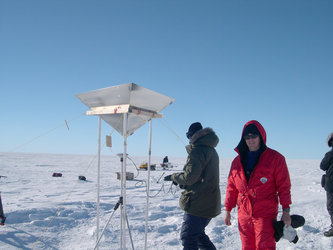
Cryosat Ground validation campaign
To guarantee ESA's CryoSat mission is delivering the best data possible, scientists took part in a major expedition to the Arctic, part of a collaborative effort between ESA and NASA to gather ice measurements as the satellite orbits above.
CryoSat was launched in April 2010 to monitor the changes in the thickness of marine ice in the polar oceans and in the vast ice sheets that blanket Greenland and Antarctica.
As with any Earth observation mission, it is important to validate the readings acquired from space. This involves comparing the satellite data with measurements taken in situ, usually on the ground and from the air. For CryoSat, that meant sending teams to one of the harshest environments on Earth.
This video shows this activity near Ilulissat on the west coast of Greenland and also on some camps located on the greenlandic ice cap above the arctic circle.
It includes interviews of Malcom Davidson, ESA Cryosat Validation Manager (in english and french), Santiago De La Peña, Research Associate, University of Edinburgh (in english and spanish), Henriette Skourup, Denmark National Space Institute (in english and danish).
More backgroud information can be found on: http://www.esa.int/esaLP/LPcryosat.html






